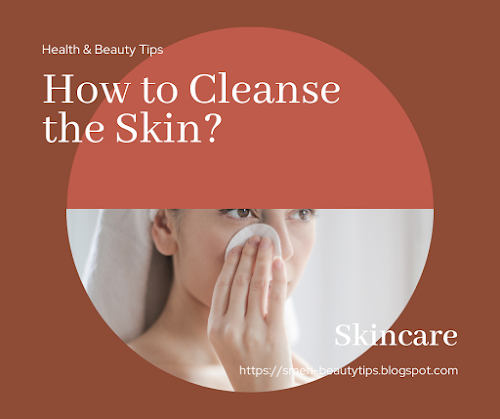Face cleansing is a vital skincare routine as it helps in clearing clogged pores and removes debris from the skin. The cleansing process aids in calming skin tightness and sloughing off dead skin cells. People prone to acne or have uneven skin tones can do skin cleansing once or twice a week
This is also important to remember to eschew certain cleansing mistakes so as to prevent the side effects of certain products. Also, there are different face-cleansing methods but here I am writing about simple cleansing tips that one can follow on the regular basis.
How to Cleanse the Skin?
#1 Cleansing:
Before cleansing wash the face with tepid water and then apply natural-based cleanser or vegetable oil like coconut, palm oil, etc on the face and neck with the help of your fingertips. A natural cleanser is good for the skin because of its lower PH level.
Gently massage the neck in the upward direction and the face in circular motions for 5-10 minutes. Now wash the face with lukewarm water and gently dry it with a soft towel to avoid any rashes or redness.
#2 Scrubbing:
After cleansing, apply a gentle or blackhead scrub on the face. There are multifarious varieties of scrubs in the market so always choose a scrub that suits your skin type.
Gently massage the scrub in a circular motion for 5-10 minutes on the face. Avoid any harsh circular movements of fingers as it would damage the skin cells. 5-10 mins are appropriate for scrubbing then wash the face with lukewarm water and afterwards pat the face dry rather than rubbing it.
#3 Toning:
Toning is a part of cleansing. After drying the face, evenly apply the toner with a cotton ball. Now gently clean the face with the cotton ball to remove any debris from the skin.Toner is good to remove all dust and dirt. It is recommended to use a toner after scrubbing as it not only removes dirt but also relaxes skin cells.
#4 Face Mask:
Apply a face mask after toning. You can use a homemade mask or a brand. A homemade mask is preferable as it doesn't contain any harmful chemicals. A clay mask or Multani mitti works best as a homemade mask, however, everybody is different so go for the face mask that suits your skin type.Now after applying the mask let it rests on the face for 10-20 minutes until it drys, then washes it off and dry the face with a soft towel. A mask gives your face a smooth look.
Aztec healing clay has worth knowing benefits and tries not to wear any metal to help it work properly as metal can interfere with its ionic charges. Know its benefits in the post,'Aztec Healing Clay Mask Benefits On Skin'.
Are you on Pinterest? I have a board on 'Beauty & Health Tips' that you may like. For updates, you can check my Facebook page 'Health & Beauty Tips'.
#5 Moisturising:
Moisturising is good at making the skin soft and flexible. It helps to glow the skin and prevent it from the signs of ageing. Choosing the right moisturiser that suits your skin type can be daunting so check this post, 'The best moisturisers for every single skin type' to get aware of the best moisturisers.
Avoid Cleansing Mistakes:
For healthy and glowing skin, it is recommended to cleanse the skin at least once a week and avoid the following mistakes:
- Don't use face wipes as many of them are loaded with chemicals that can harm the skin.
- Don't Overdo scrubbing.
- Never Soak up cream cleanser on the skin.
- Never use harsh cleansers on oily skin.
- Not looking for ingredients before buying a face cleansing product.
Now I'd like to hear from you:
What cleansing strategy do you follow?
or are you struggling with following a daily skincare routine?
Either way, let me know by leaving a comment below right now.
Related Posts:
Are you on Pinterest? I have a board on 'Beauty & Health Tips' that you may like. For updates, you can check my Facebook page 'Health & Beauty Tips'.
 |
https://smeh-beautytips.blogspot.com This content is copyright protected. |
Pin It:



Comments
Post a Comment